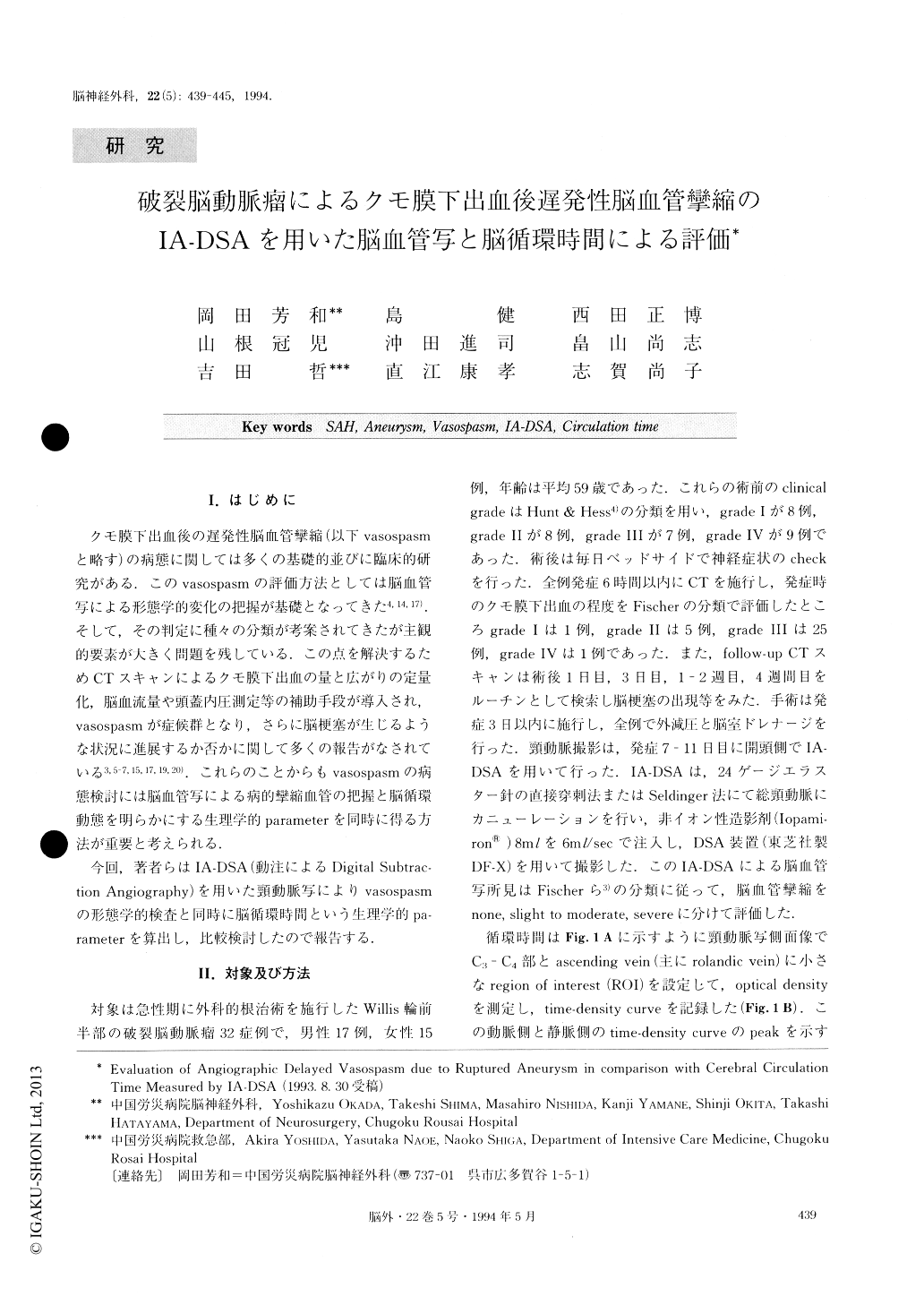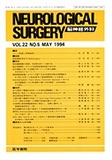Japanese
English
- 有料閲覧
- Abstract 文献概要
- 1ページ目 Look Inside
I.はじめに
クモ膜下出血後の遅発性脳血管攣縮(以下vasospasmと略す)の病態に関しては多くの基礎的並びに臨床的研究がある.このvasospasmの評価方法としては脳血管写による形態学的変化の把握が基礎となってきた4,14,17).そして,その判定に種々の分類が考案されてきたが主観的要素が大きく問題を残している.この点を解決するためCTスキャンによるクモ膜下出血の量と広がりの定量化,脳血流量や頭蓋内圧測定等の補助手段が導入され,vasospasmが症候群となり,さらに脳梗塞が生じるような状況に進展するか否かに関して多くの報告がなされている3,5-7,15,17,19,20).これらのことからもvasospasmの病態検討には脳血管写による病的攣縮血管の把握と脳循環動態を明らかにする生理学的parameterを同時に得る方法が重要と考えられる.
今回,著者らはIA-DSA(動注によるDigital Subtrac—tion Angiography)を用いた頸動脈写によりvasospasmの形態学的検査と同時に脳循環時間という生理学的pa—rameterを算出し,比較検討したので報告する.
Delayed vasospasm due to ruptured aneurysm has been basically evaluated by angiographic changes in contrast to clinical features such as delayed ischemic neurological deficits (DIND). However, the discrepan-cies between angiographic and clinical findings have been pointed out, In this study, angiographic changes and cerebral circulation time in ruptured aneurysms were simultaneously investigated with IA-DSA.
Thirty-two patients, who had ruptured aneurysms at the anterior circle of Willis and neck clippings at the acute stage, were investigated. Carotid angiogram was performed with IA-DSA on the 7-13th day after the attack. Angiographic changes were evaluated by Fis-cher's classification and circulation time was calculated in the following way. A time-density curve was obtained at the two ROI's; the C3-C4 portion and the rolandic vein. Circulation time was defined by the dif-ference between the time showing peak optical density at the carotid and the venous portion. The control value of this circulation time obtained from 20 cases with non-rupture aneurysm and epilepsy was 3.4 sec (53 year old) on the avegate. X-ray CT scan examina-tion was performed at the same time and clinical fea-tures were observed everyday.
Angiographically, 3 cases were free from vasospasm, 18 cases were found to present slight to moderate vasospasm, and 11 cases showed severe vasospasm. Circulation time in patients with no spasm was 3.6 seconds, in patients with slight to moderate vasospasm it was 4.3 seconds and in patients with severe vaso-spasm it was 6.8 seconds. Ten patients showing cerebral infarction on CT scans demonstrated significantly long circulation time, 7.0 second on the average. And all pa-tients having severe vasospasm with circulation time more than 6 seconds presented DIND such as hemi-paresis.

Copyright © 1994, Igaku-Shoin Ltd. All rights reserved.


